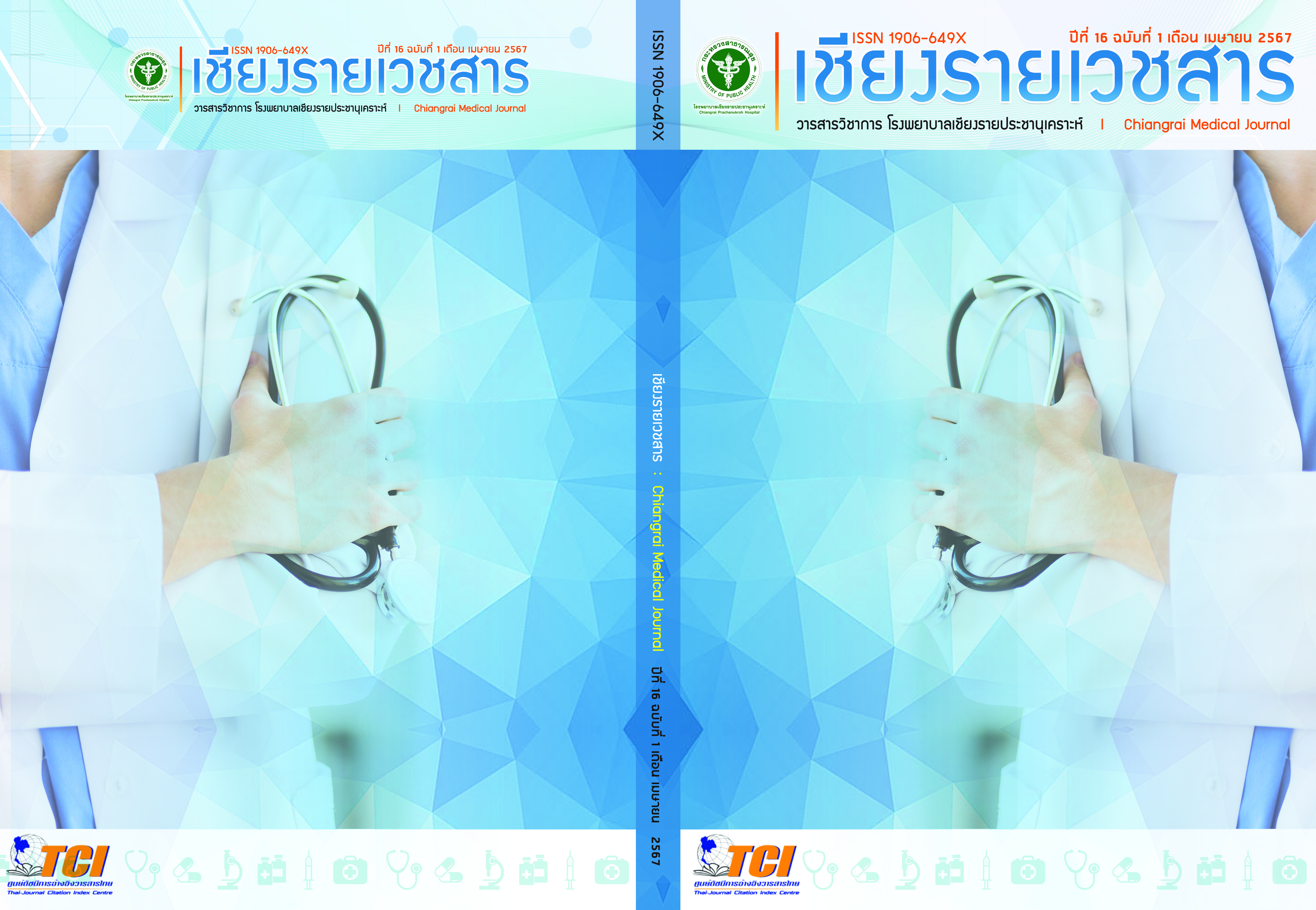The study of Fasting Blood Sugar and Hemoglobin A1c level in type 2 Diabetic patients between home delivery of medication service and health promotion center in Lampang hospital
Main Article Content
Abstract
BACKGROUND: The COVID-19 pandemic has led to disruptions in the delivery of care to patients with diabetes. Home delivery of medication service has emerged as a potential solution to improve access to care and reduce the risk of disease transmission. However, there is limited research on the effects on blood sugar levels between receiving medication by home delivery service and at a clinic.
OBJECTIVE: To compare the blood sugar levels of patients with type 2 diabetes between the group that received medication by home delivery of medical service and the group that received medication at the outpatient clinic of the Health Promotion Center, Lampang Hospital.
METHODS: This is a retrospective cohort study. The study sample consisted of two groups, each with 434 participants: diabetic patients receiving medications by postal delivery and patients receiving medications at health promotion center in Lampang Hospital group. Data were collected from the medical records of patients with type 2 diabetes from January 1, 2022, to December 31, 2022. Data were analyzed using descriptive statistics, Fisher's exact test, independent t-test, and Multivariable Gaussian regression.
RESULTS: There were a total of 868 type 2 diabetes patients. The majority of participants were female (63.94%, n=555) and over 60 years of age (69.01%, n=599). Multivariable Gaussian regression analysis revealed that the mean post-follow-up FBS level in the postal medication group was 1.25 mg/dl lower than health promotion center group, but this difference was not statistically significant (P=0.562). Similarly, the mean post-follow-up HbA1c level in the postal medication group was 0.12 mg% higher than health promotion center group, but this difference was also not statistically significant (P=0.063).
CONCLUSION AND RECOMMENDATIONS: The levels of FBS and HbA1c between receiving medication using home delivery service and receiving at a clinic were not statistically significantly different. Postal medication delivery may be a viable alternative to traditional clinic visits for receiving medication among patients with type 2 diabetes.
Article Details

This work is licensed under a Creative Commons Attribution-NonCommercial-NoDerivatives 4.0 International License.
References
International Diabetes Federation. IDF diabetes atlas 2021, 10th edition [Internet]. Brussel: International Diabetes Federation;2021 [cited 2023 Nov 26]. Available from: https://diabetesatlas.org/
Aekplakorn W, Chariyalertsak S, Kessomboon P, Assanangkornchai S, Taneepanichskul S, Putwatana P. Prevalence of Diabetes and Relationship with Socioeconomic Status in the Thai Population: National Health Examination Survey, 2004-2014. J Diabetes Res. 2018;2018:1654530
Fowler MJ. Microvascular and macrovascular complications of diabetes. Clinical diabetes. 2011;29(3):116-22.
Banluekun T. Promma N. Factors relating to the quality of life of type II diabetes mellitus patients at primary care cluster Aranyaprathet, Sa Kaeo province. Medical Journal of Srisaket Surin Buriram Hospital. 2022;37(1):53-64.
Nitiyanant W. Diabetes and COVID-19. Diabetes Journal 2022;54(2):85-92.
Soonthorn S, Ngamkham S, Tanglakmankhong K, Wattanakul B, Wattanakul S. Assessing the results of the postal medication delivery service system for diabetes patients in the COVID-19 pandemic situation in Thailand. Nonthaburi: Health Systems Research Institute (HSRI); 2022.
Allen JC. Sample size calculations for two independent groups: a useful rule of thumb. Statistics. Proceedings of Singapore Healthcare 2011; 20(2): 138-40.
Chailak P, Sunongbua A. The outcome of diabetic patients care during the prevention of COVID-19 pandemic situation at Mueang Chaiyaphum primary care unit, 2020. Chaiyaphum Medical Journal 2021;41(1): 111-21.
Tankul S. Comparison of hemoglobin A1c levels in Type 2 diabetic patients betwee home delivery of medication service and outpatient department service during COVID-19 pandemic. Journal of Primary Care and Family Medicinen. 2022;5(2):123-31.
Cunha AS, Pedro AR, Cordeiro JV. Facilitators of and barriers to accessing hospital medical specialty telemedicine consultations during the COVID-19 pandemic: systematic review. J Med Internet Res. 2023;25:e44188.


